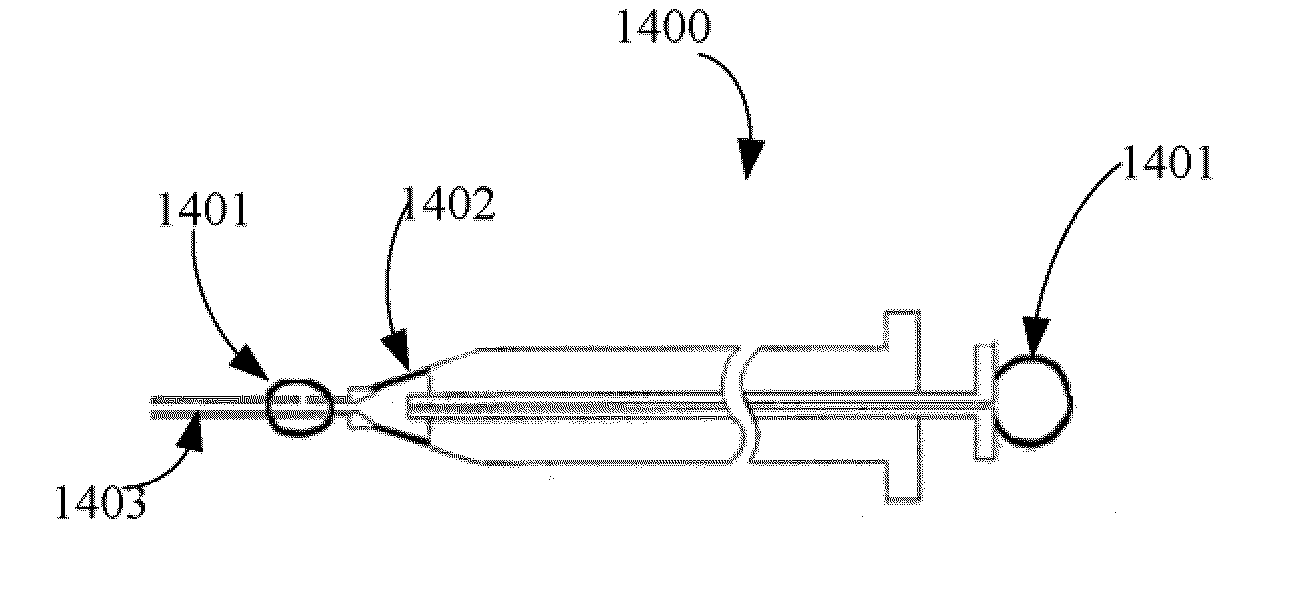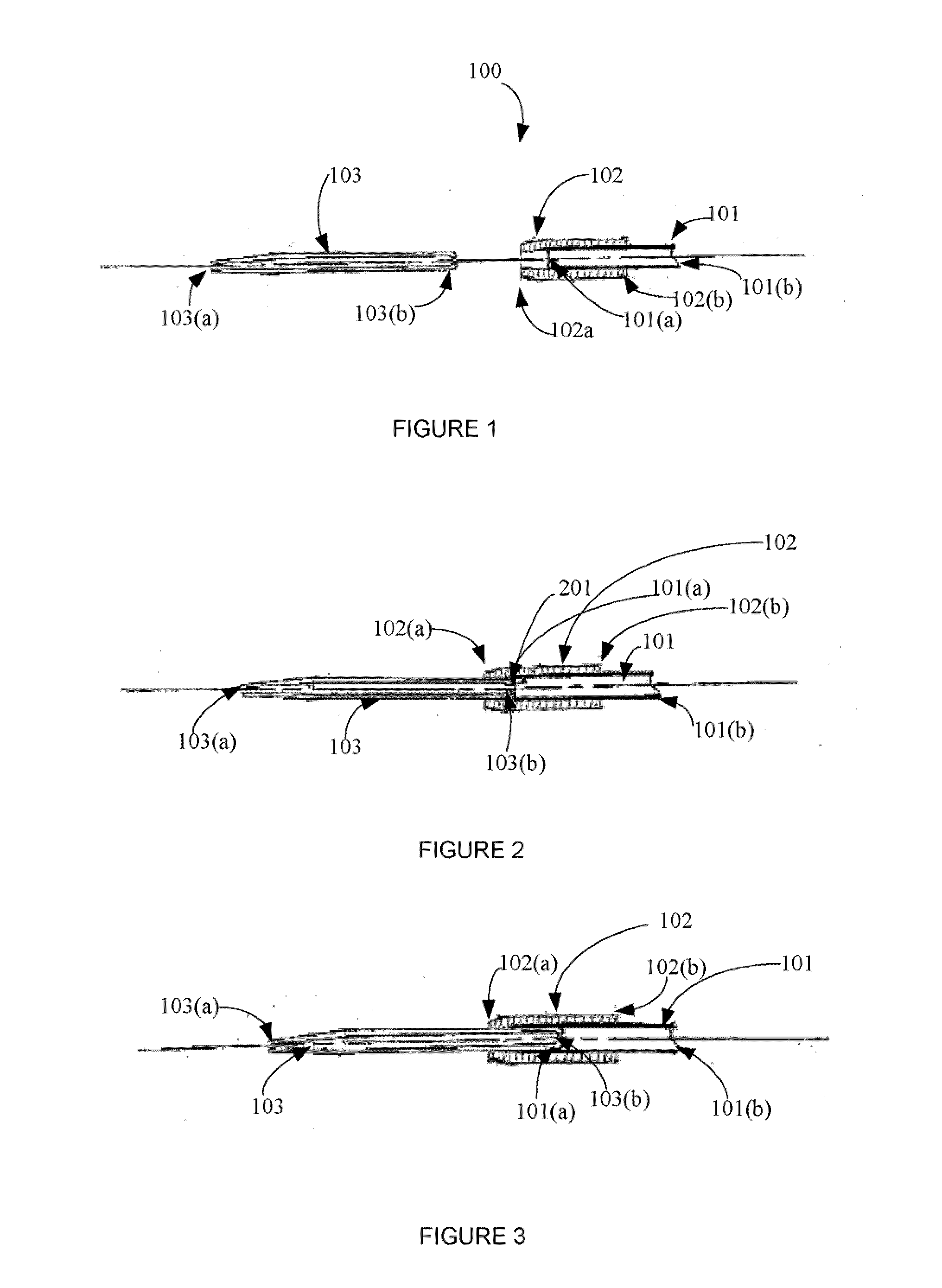Pipette Device and Method of Manufacture and Use Thereof
a pipette and pipette technology, applied in the field of pipette devices and methods, can solve the problems of reducing the sensitivity of pressure control of pipette, difficult observation and control of cell movement, and not being suitable for some non-quantitative fluid transfer
- Summary
- Abstract
- Description
- Claims
- Application Information
AI Technical Summary
Benefits of technology
Problems solved by technology
Method used
Image
Examples
Embodiment Construction
[0038]Embodiments of the present invention provide a pipette device for moving or transferring micron quantities of fluid (such as about 3-5 micron, or as low as less than 1 micron) including its contents, such as cells and oocytes / embryos, with a simplified pipette tip loading and unloading process. Embodiments of the present invention further provide a pipette device comprising a pipette controller by which air pressure inside and outside of the micropipette controller can be intentionally balanced.
[0039]In certain embodiments, the present invention provides a pipette device comprising: a) a pipette controller having a proximal end, a distal end, a rigid tube extending from the distal end, and a manually engageable lever or actuating mechanism for creating positive and negative air pressure at the distal end of the rigid tube, b) a flexible sealing tube having a proximal end and a distal end, wherein the proximal end of the sealing tube creates an externally air-tight seal in comm...
PUM
| Property | Measurement | Unit |
|---|---|---|
| length | aaaaa | aaaaa |
| length | aaaaa | aaaaa |
| length | aaaaa | aaaaa |
Abstract
Description
Claims
Application Information
 Login to View More
Login to View More - R&D
- Intellectual Property
- Life Sciences
- Materials
- Tech Scout
- Unparalleled Data Quality
- Higher Quality Content
- 60% Fewer Hallucinations
Browse by: Latest US Patents, China's latest patents, Technical Efficacy Thesaurus, Application Domain, Technology Topic, Popular Technical Reports.
© 2025 PatSnap. All rights reserved.Legal|Privacy policy|Modern Slavery Act Transparency Statement|Sitemap|About US| Contact US: help@patsnap.com



